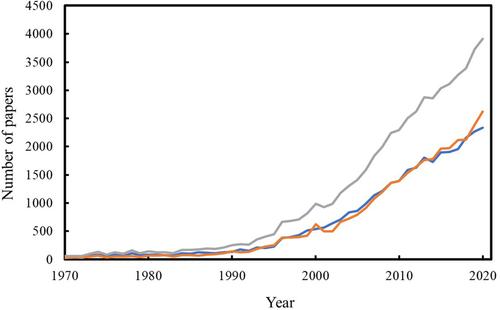Research trends in the oenological and viticulture sectors
Abstract
Background and Aims
The purpose of this study was to analyse the trend of the scientific evolution of the oenological and viticulture sectors by accounting for the peer-reviewed articles written in the English language as retrieved from the Scopus database.
Methods and Results
The scientific research in both sectors was active in 2020 with 2000–2500 publications per year. Owing to their long tradition in wine production, Italy, Spain and France were the main publishing nations, even if other nations, such as the USA, China and Australia, started to be interested in wine production. In the oenological sector, the highest number of articles were published by researchers working in French and Spanish highly specialised institutions. Over the 1950–2020 period, the Journal of Agricultural and Food Chemistry has been the most cited. Over the last 5 years, other journals, such as Food Chemistry, Molecules and Oeno One, have gained reputation; furthermore, from the bibliographic map analysis the antioxidant activity of anthocyanidin and polyphenols has been the topic most studied, followed by the genetics of grapevine and yeast, and methods of analysis to determine volatile, nutritional and anti-nuisance compounds.
Conclusions
In contrast to the beer sector, current wine research has probably taken for granted the negative implications of the consumption of wine on human health and has given rise to no market targets for low-alcohol or alcohol-free alternatives.
Significance of the Study
Despite the spreading of digital techniques in grapegrowing, the present wine technology appeared to be less receptive to the upcoming digital transformation of the food and beverage industry.


 求助内容:
求助内容: 应助结果提醒方式:
应助结果提醒方式:


